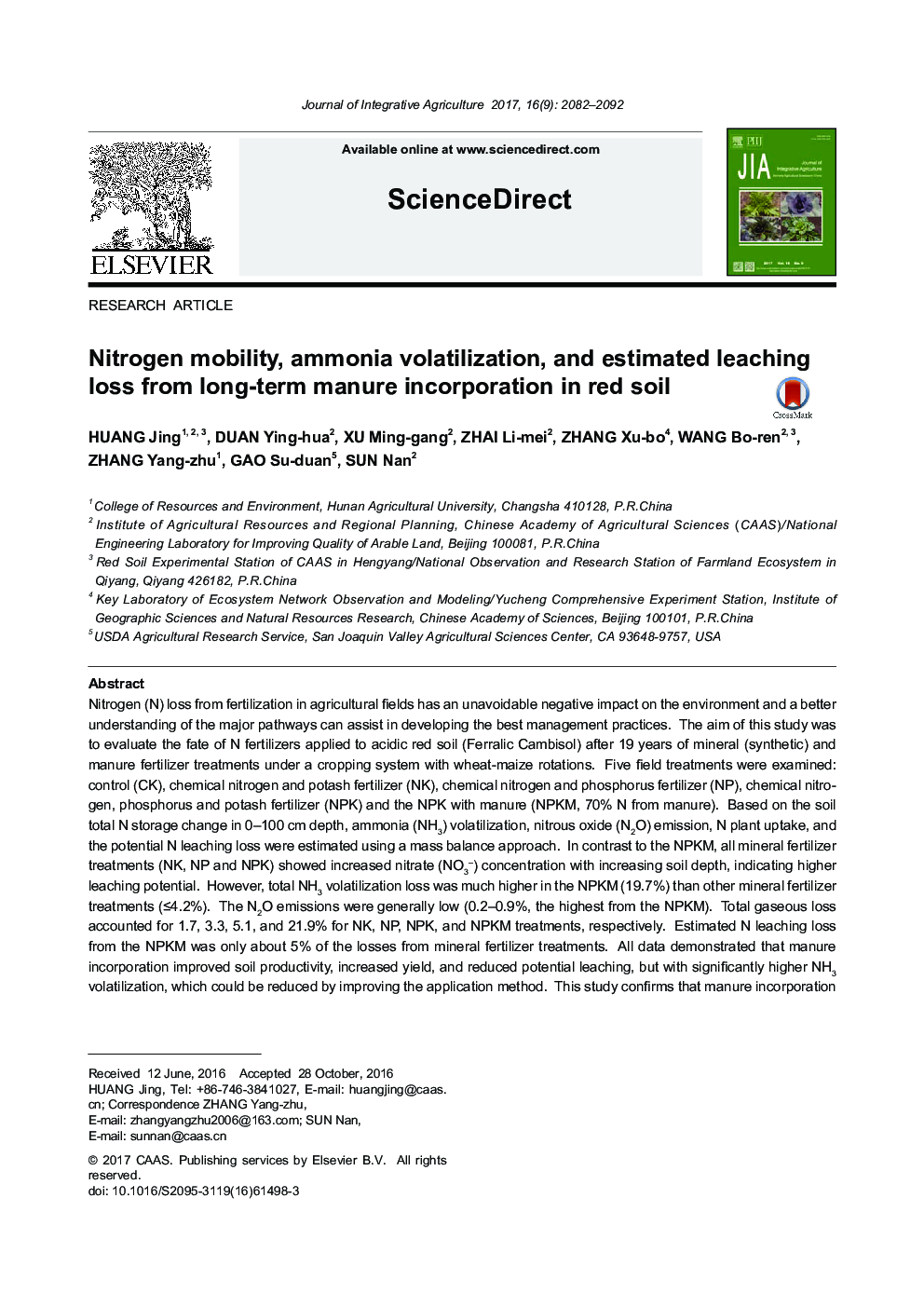| Article ID | Journal | Published Year | Pages | File Type |
|---|---|---|---|---|
| 8875883 | Journal of Integrative Agriculture | 2017 | 11 Pages |
Abstract
Nitrogen (N) loss from fertilization in agricultural fields has an unavoidable negative impact on the environment and a better understanding of the major pathways can assist in developing the best management practices. The aim of this study was to evaluate the fate of N fertilizers applied to acidic red soil (Ferralic Cambisol) after 19 years of mineral (synthetic) and manure fertilizer treatments under a cropping system with wheat-maize rotations. Five field treatments were examined: control (CK), chemical nitrogen and potash fertilizer (NK), chemical nitrogen and phosphorus fertilizer (NP), chemical nitrogen, phosphorus and potash fertilizer (NPK) and the NPK with manure (NPKM, 70% N from manure). Based on the soil total N storage change in 0-100 cm depth, ammonia (NH3) volatilization, nitrous oxide (N2O) emission, N plant uptake, and the potential N leaching loss were estimated using a mass balance approach. In contrast to the NPKM, all mineral fertilizer treatments (NK, NP and NPK) showed increased nitrate (NO3â) concentration with increasing soil depth, indicating higher leaching potential. However, total NH3 volatilization loss was much higher in the NPKM (19.7%) than other mineral fertilizer treatments (â¤4.2%). The N2O emissions were generally low (0.2-0.9%, the highest from the NPKM). Total gaseous loss accounted for 1.7, 3.3, 5.1, and 21.9% for NK, NP, NPK, and NPKM treatments, respectively. Estimated N leaching loss from the NPKM was only about 5% of the losses from mineral fertilizer treatments. All data demonstrated that manure incorporation improved soil productivity, increased yield, and reduced potential leaching, but with significantly higher NH3 volatilization, which could be reduced by improving the application method. This study confirms that manure incorporation is an essential strategy in N fertilization management in upland red soil cropping system.
Keywords
Related Topics
Life Sciences
Agricultural and Biological Sciences
Agricultural and Biological Sciences (General)
Authors
Jing HUANG, Ying-hua DUAN, Ming-gang XU, Li-mei ZHAI, Xu-bo ZHANG, Bo-ren WANG, Yang-zhu ZHANG, Su-duan GAO, Nan SUN,
